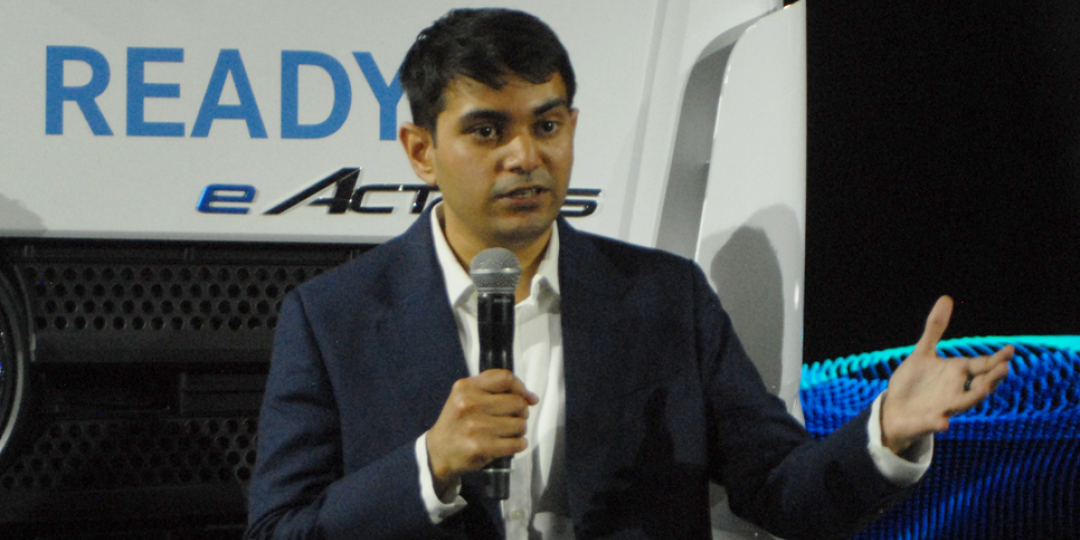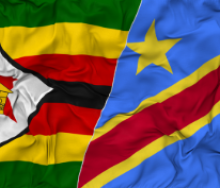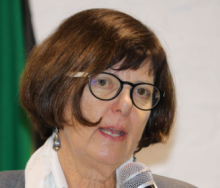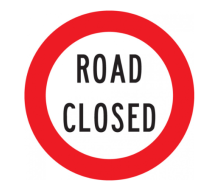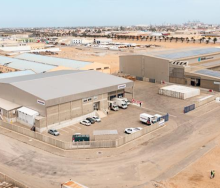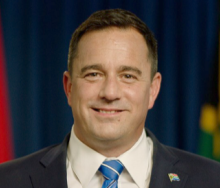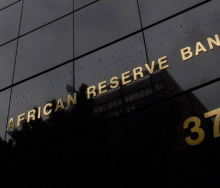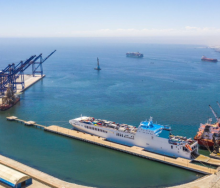As South Africa basks in the longest load-shedding-free period in years, the prospect of a return of rolling power outages was one of the issues that dominated an e-mobility launch held by Daimler Truck South Africa (DTSA) at Lanseria International Airport on 21 May.
It wasn’t necessarily a lift-off first for the original equipment manufacturer (OEM) in the zero-emission vehicle (ZEV) sphere, as the brand launched a range of 6X4 Fuso trucks in September 2022, the “eCanter”.
However, apart from announcing new developments to the eCanter range, the Lanseria launch heralded the unveiling of the OEM’s pièce de résistance – the Mercedes-Benz eActros.
But beautiful green machines aside, one of the questions that was top of mind during the function was how road freight operators, eager to decarbonize their fleets, are expected to keep e-trucks charged.
With South Africa’s national election on 29 May fast approaching, word on the street is that the ‘honeymoon period’ of consistent grid energy will most likely abruptly end before June rolls around.
Electricity Minister Kgosientsho Ramokgopa might disagree with this bit of election cynicism, but it’s understood that Eskom has been burning diesel to keep the utility’s open-turbine generators going as if there’s no tomorrow.
Unfortunately for Shlok Kulshrestha, ZEV consultant at Daimler’s head office in Stuttgart, this was what welcomed him on his first visit to South Africa – a wall of doubt about whether we're e-ready.
“It’s very fair for people to ask: ‘How will I charge my truck?’” he said. “Will I be able to get out?”
Not everything energy, though, is dependent on utilities like Eskom, he said, and power outages aren’t endemic to South Africa.
“We see it in countries like the United States.”
Along with renewable energy sources, all power generators concerned, be they utilities like Eskom or independent power producers generating electricity through solar means, ideally need to collaborate around an energy-secure future, Kulshrestha said.
“That’s the crux of the story. Energy lies in the hands of utilities and generators.”
Daimler, though, is also investing in ongoing support for fleet owners and managers investing in its trucks.
“We have an e-consulting opportunity where we try and understand what the charging infrastructure is our customers need to feasibly run their trucks. With electronic vehicles, charging infrastructure is something that no operator has dealt with before and we try and navigate through this.”
Kulshrestha said it includes site assessments in view of tailored charging solutions.
He said Daimler is well aware that the e-journey in developing markets may be trickier than it is back in Germany.
“In Europe, there is a lot of incentive for the creation and implementation of the necessary infrastructure to support e-mobility. Even so, it’s not easy but when governments and other stakeholders are all on board, it makes it easier.”
Through greater collaboration across South Africa’s road freight sector, decarbonization progress might just surprise the naysayers and detractors, Kulshrestha said.
